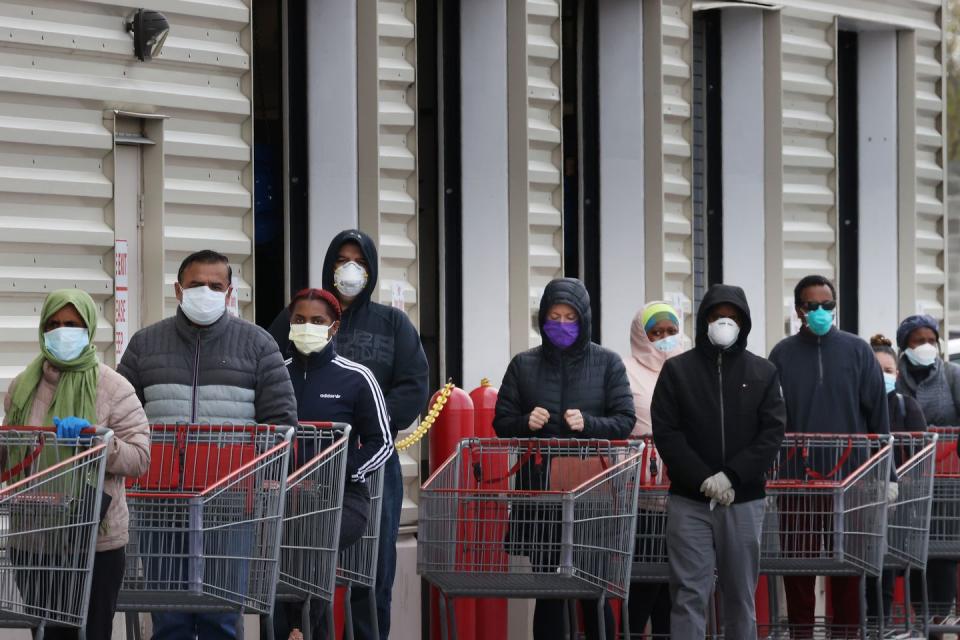One Hundred and Fifty Days

When my son’s high school closed in March, I sat down with him and told him we were living through something he’d never forget. All of you remember this particular moment. You will for the rest of your lives. The week in March when everything came to a halt, the country went inside, and it suddenly felt as if you went from watching a movie to being in a movie. Administrators at my son’s school said the shutdown would last three weeks.
Around this time, the Trump administration announced that it would take “15 days to slow the spread,” promising the crisis would turnaround fast. Fifteen days later, the state where I live, Illinois, extended its shutdown to a month. Then extended it again. And again. My kid’s school never reopened. And it’s unclear when, or how, the students will go back this school year.

It’s been 150 days since the Trump administration enacted its 15-day plan. One hundred and fifty days of promises of curves flattening in weeks, of the summer heat causing the virus to go away, of reopenings and paused openings and reclosings.
One hundred and fifty days of job losses in the tens of millions, of benefits to cushion the blow given and taken away.
One hundred and fifty days of protests and uprisings and of state violence to put them down.
One hundred and fifty days of cases rising ever higher and bodies stacking in numbers that are hard to fathom.
There were about 5,000 cases when we took 15 days to slow the spread. Now there are five million. Everything in every way has gotten worse. The virus is “more widespread” than it was when we started, according to Dr. Deborah Birx, the coordinator of the White House coronavirus task force, “and it's both rural and urban.” In other words, now it’s fucking everywhere. And there’s still no national plan in place to slow the spread.

One hundred and fifty days is a long time to wait for a plan. It’s made all the longer when it’s doled out in promises of days and weeks and months. The implied promise that the end is always around the corner.
You managed those first few weeks—Tiger King and sourdough, troubleshooting Zoom, and bribing the kids with all the screen time they can handle—because it would be over soon. Hopefully. Maybe. You did it because government officials had to come up with a plan soon, because who would expect this to be sustainable. It wasn’t sustainable and the plan never came. And yet here we are.
The government paid us $1,200 to provide for an infinite wait. We moved our entire lives to Zoom: school, work, family, friends. All relegated to squares on a screen so ubiquitous that it became a forever verb even though most of our conversations revolve around who is and isn’t muted. We dealt with loss. So much loss. An endless void of loss. We lost people we know. Friends. Family. We lost jobs. Holidays. School years. We lost our lives as we know them. And we’re still waiting to mourn these losses properly. We likely never will.
When my wife was diagnosed with cancer in 2017, a nurse gave us the best advice we’d receive through the whole ordeal. “Just think of this as a bad year,” she told my wife. We returned to that advice repeatedly throughout what was, in fact, a very bad year. It didn’t make anything easier, but it did give us a sense of scale for how long things would be terrible. It told us there were no quick fixes and that the only way out was through. Most importantly, she was honest with us.
Early in the crisis, on February 25, weeks before the coronavirus became a pandemic and the start of Trump's 150 day count, someone offered the nation that same honesty. Nancy Messonnier, a scientist high up at the CDC, told reporters: “We need to be preparing for significant disruption in our lives.” The president, of course, hated the message, tried to have Messonnier fired, and assured Americans that we were “very close to a vaccine,” the first of many easy fixes he promised that never materialized. Instead, the days turned into weeks, the weeks into months.
Honesty, instead of impossible promises, would have made those months more tolerable, just like that nurse’s advice helped my wife and I get through it. Knowing we were in for a bad year—instead of 15 days, instead of one month, instead of a lost spring that turned into a lost summer into a lost fall—we could have prepared for a marathon and not a sprint. Instead every extension was a new heartbreak.
Where it once was March now it’s August. Fifteen days turned into 150. If you lost count along the way, that’s understandable because it took no time and all the time. So much has changed and nothing has changed. Nearly every other country that was hit when we were has moved toward cautious reopenings while we’re stuck right where we were at the beginning: The president promising that we’re very close to a vaccine and my kid’s school assuring an in-person return after a few weeks of remote class. Neither will happen. We’ve had 150 days to learn something beyond baking bread, and we’re still left with quick fixes and too-short timeframes.
The only difference between then and now is that it's all so much worse. More than 160,000 dead. Five million cases. One hundred and fifty days. Prepare yourself for 150 more. Because this isn’t just a bad year, this is the worst year.
You Might Also Like

